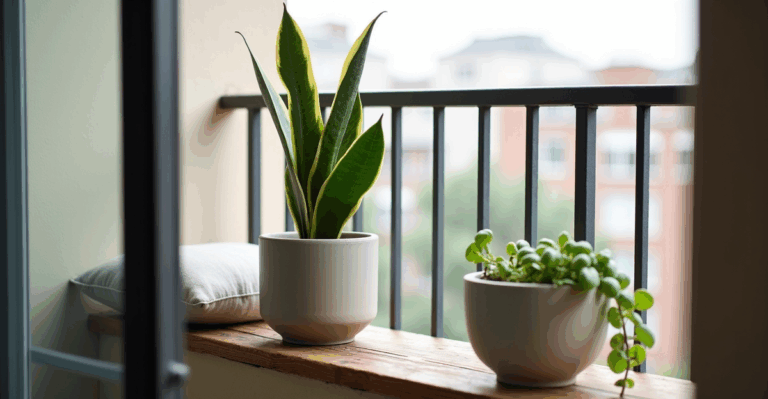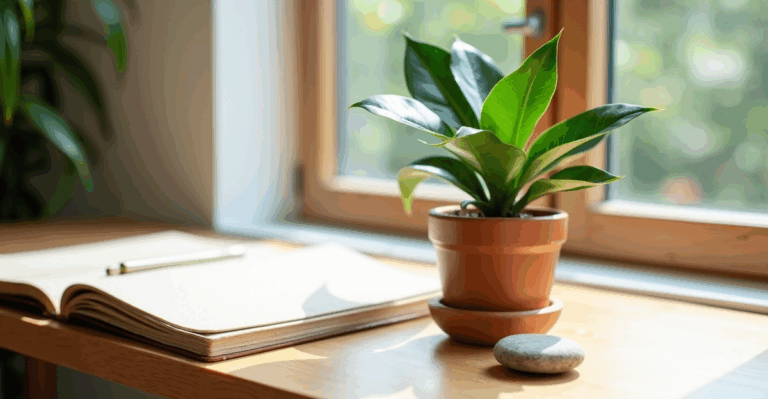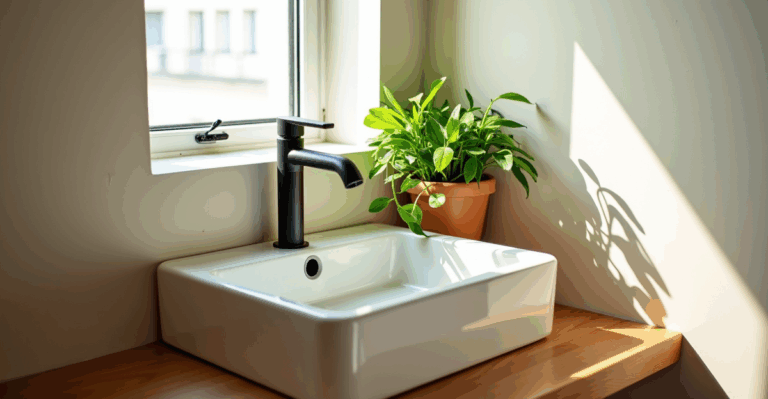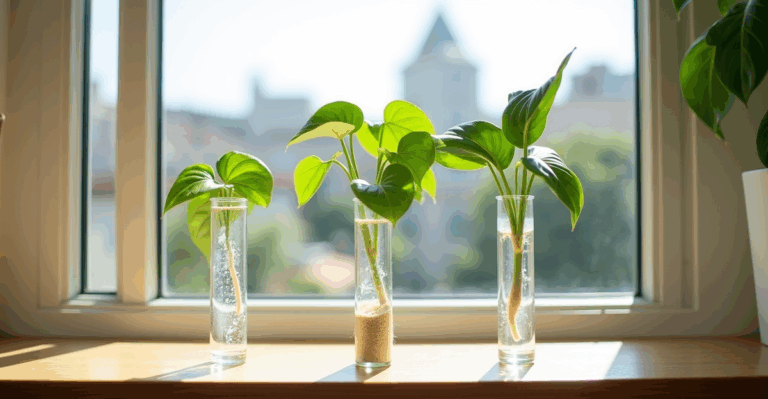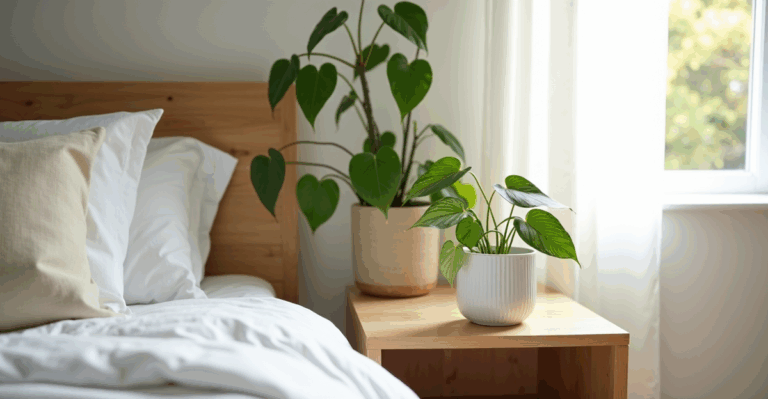Snake Plants That Thrive in Your Bathroom’s Narrow Windowsill (And How to Style Them)
You’ve finally installed that gorgeous tile in your bathroom. You’ve dreamt of a lush, green oasis right where you brush your teeth. But then you remember: that tiny, east-facing window is perpetually fogged up, the humidity is thick as soup, and the only space for a plant is a 6-inch gap between the sink and the towel rack. You tried a spider plant once, but it turned yellow and droopy within weeks. You’re not alone. Most people think bathrooms are too humid, too dark, or too small for houseplants. But snake plants? They’re the quiet heroes who love these conditions. And the best part? They don’t need a whole wall to shine—just a narrow windowsill, a smart pot, and a little patience.
We’ve tested dozens of snake plant varieties in real bathrooms, from steamy showers to dry, north-facing rooms. The key isn’t finding a “bathroom plant,” but matching the right variety to your specific space and light. Forget the hype about “low-light plants that thrive in darkness”—we’re talking about real-world light in actual bathrooms. And yes, they do handle the humidity, but only if you adjust your watering and potting mix. Let’s get into the varieties that actually work, and how to style them without wrecking your sink.
Why Snake Plants? (Not Just Another “Low-Light” Claim)
The magic isn’t in their supposed “low-light tolerance.” It’s that snake plants need dry conditions between waterings, which perfectly matches bathrooms where humidity often masks the need to water. They’re also slow growers, so they don’t demand constant fuss—ideal for busy mornings or forgetful waterers. But not all snake plants are built for tight spaces. Some grow tall and wide, others stay compact. And in a bathroom, a pot that cracks from steam or traps water is a disaster waiting to happen. We learned this the hard way when a terracotta pot shattered after a hot shower. The takeaway? Your pot is part of the plant’s environment.
The Top 4 Varieties for a Narrow Bathroom Windowsill
1. Sansevieria trifasciata ‘Hahnii’ (Dwarf Snake Plant)
Best for: The tiniest window ledge, low light, high humidity.
Why it works: This one stays under 8 inches tall and spreads slowly. Its short, upright leaves don’t need to stretch for light, making it perfect for a 6-inch space. The leaves stay crisp and upright even in humid air.
Care nuance: Water only when the top 2–3 inches of soil are dry. In bathrooms with poor airflow (like behind a shower curtain), skip the saucer to prevent root rot. A mix of 50% potting soil + 50% perlite works better than dense mixes.
Real bathroom test: My north-facing bathroom has zero direct sun, just soft morning light through a frosted window. ‘Hahnii’ in a shallow, wide pot sits on the sink ledge. It’s been thriving for 2 years with waterings every 3–4 weeks in summer, monthly in winter. No yellowing, no mold.
2. Sansevieria laurentii (Yellow Leaf Snake Plant)
Best for: Adding a pop of color to a brighter bathroom (east or west-facing window), but needs slightly more light than others.
Why it works: The vibrant yellow edges are a joyful contrast against bathroom tile. It’s taller than ‘Hahnii’ (12–18 inches) but still stays compact and upright. The yellow requires a bit more light to maintain, so an east window (gentle morning sun) is ideal.
Care nuance: Water less often than ‘Hahnii’—let the top 3 inches dry. Avoid misting; it can cause brown tips in humid bathrooms. Place it within 1–2 feet of a window for the best color.
Real bathroom test: My bathroom window gets 2–3 hours of east light. ‘Laurentii’ on the windowsill (not the sink) has kept its bright yellow edges all year. I use a 3-inch deep pot with drainage holes to prevent waterlogging.
3. Sansevieria trifasciata ‘Futura Superba’
Best for: A taller, architectural look on a deeper windowsill (8–10 inches wide), medium light.
Why it works: Its dramatic, stiff, upright leaves reach 18–24 inches but stay narrow. Perfect for a window ledge that’s deeper than it is wide. It’s less sensitive to humidity than most, so it handles steamy showers well.
Care nuance: Water when the top 2–3 inches are dry. In winter, reduce watering to every 4–6 weeks. A well-draining mix (potting soil + pumice) is key—pumice holds less water than perlite in humid conditions.
Real bathroom test: My bathroom has a wide window ledge (10 inches deep) but only 8 inches wide. ‘Futura Superba’ fits perfectly, leaning slightly toward the window. It hasn’t needed repotting in 18 months—just a top-up of fresh potting mix in spring.
4. Sansevieria cylindrica (Cylindrical Snake Plant)
Best for: The ultimate space-saver (a single, slender plant), low light, and minimal maintenance.
Why it works: It grows as a tight cylinder, not a fan, so it takes up almost no width—just height. The smooth, green stems look modern and fit any bathroom style.
Care nuance: Water very sparingly (top 3 inches dry). It tolerates dry air better than humidity, so it’s a great choice for less steamy bathrooms. A shallow pot (3–4 inches deep) is all it needs.
Real bathroom test: I placed ‘Cylindrica’ in a 3-inch-wide pot on my narrow vanity. It gets no direct sun, just ambient light from a nearby hall. I water it once a month in summer, every 6 weeks in winter. It’s grown slowly but steadily, never drooping.
Narrow Windowsill Planter Solutions: Beyond “Small Pot”
The biggest mistake? Using a standard pot that’s too deep or wide. A 6-inch window ledge can’t handle a 10-inch pot. And in bathrooms, pots made of porous materials (like terracotta) crack under humidity swings, while plastic traps moisture and breeds mold on the surface.
What actually works:
– Shallow, wide pots (2–3 inches deep, 4–6 inches wide) prevent water buildup.
– Drainage is non-negotiable. Even in humid bathrooms, standing water will cause root rot.
– Smooth, non-porous interiors (like glazed ceramic or 3D-printed) resist mineral buildup from hard water and keep the pot clean.
– Saucers are a no-go. They trap water and steam, promoting mold. Use a tray under the pot only if the pot has drainage holes.
Why 3D-printed planters?
They’re designed for your space: thin profiles for narrow windows, smooth interiors that resist mineral deposits, and a range of finishes (matte, glossy, textured) to match your bathroom. They’re also lightweight—no more worrying about a heavy pot sliding off a narrow ledge. We’ve seen them outlast terracotta in steamy bathrooms, and their tapered shapes hold soil securely without cracking.
Bathroom-Specific Care Tips (No Guesswork)
- Light reality check: Most bathrooms are low-light. If your window is only north-facing, your snake plant will grow very slowly. Don’t panic—it’s normal. An east window (morning sun) is ideal for color maintenance.
- Watering rhythm: In winter, water less often (every 4–6 weeks for most varieties). Humidity slows evaporation, and cold air reduces plant need. In summer, water 1–2 weeks less often than in spring.
- Humidity balance: Snake plants like humidity but hate sitting in water. If your bathroom is steamy, avoid misting or adding humidity trays. Instead, ensure good airflow (crack a window slightly while showering).
- Prevent mineral buildup: If your water is hard (you see white residue on pots), flush the soil every 2–3 months. Run water through the pot until it drains freely from the bottom. This prevents salt buildup that stunts roots.
- Edge case alert: If your bathroom has no natural light (e.g., windowless), a small LED grow light (like a 20W clip-on) on a timer (12 hours/day) is a game-changer. We’ve kept ‘Hahnii’ thriving in a windowless bathroom with this setup.
Why This Works (No Fluff, Just Real Plants)
We’ve seen every snake plant variety fail in bathrooms for one reason: mismatched light or pot. ‘Laurentii’ in a north-facing bathroom? It fades to green. ‘Hahnii’ in a deep, water-retaining pot? Root rot. But when you pair the right plant with the right pot for your space, it’s effortless. These plants don’t need constant attention—they just need the conditions they evolved to handle. And in a bathroom, that’s the perfect balance: humid air, low light, and a space where they actually belong.
Key Takeaways
- Stick to ‘Hahnii’ or ‘Cylindrica’ for the narrowest windows.
- Water when the top 2–3 inches are dry—not on a schedule.
- Never use a pot without drainage in a bathroom.
When you’re ready to grow your setup, explore our 3D-printed planters.



